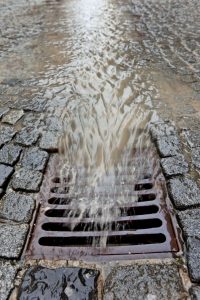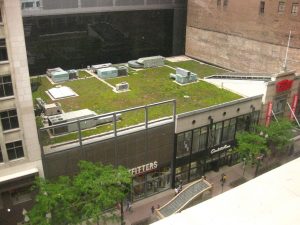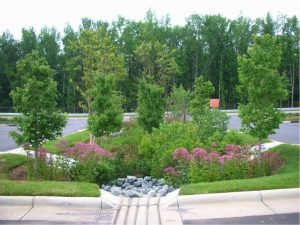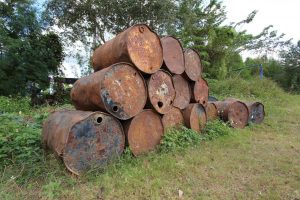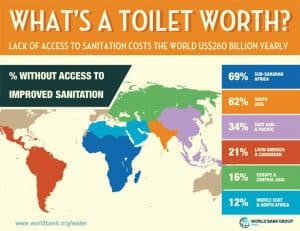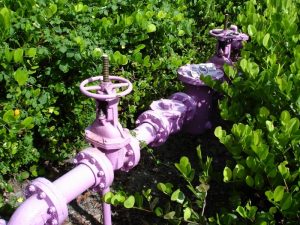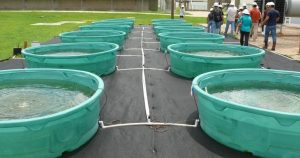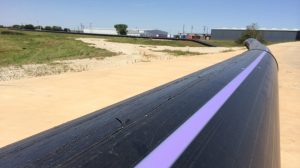The crisis of our diminishing water resources is just as severe any wartime crisis we have ever faced. —Jim Wright, U.S. Representative, The Coming Water Famine, 1966
 Water is life. No truer words were ever spoken, for without freshwater, life simply cannot exist. The first civilization in recorded history settled in Mesopotamia, or the “cradle of civilization” which is now modern day Iraq, Iran, Syria, Kuwait, and Turkey, due to its location between the Tigris and Euphrates Rivers. And since the dawn of history, water conflict has erupted when supply has become scarce.
Water is life. No truer words were ever spoken, for without freshwater, life simply cannot exist. The first civilization in recorded history settled in Mesopotamia, or the “cradle of civilization” which is now modern day Iraq, Iran, Syria, Kuwait, and Turkey, due to its location between the Tigris and Euphrates Rivers. And since the dawn of history, water conflict has erupted when supply has become scarce.
 The first recorded water conflict took place in the “Gu’edena” region, known as the “edge of paradise.” King Urlama, who ruled Lagash from 2450 to 2400 BC, diverted regional water to boundary canals, which dried up boundary ditches and deprived Umma of water. Furthering his father’s work, King Urlama’s son cut off the water supply to Girsu, a city in Umma. Since this first recorded water war, water conflict has erupted regularly on planet Earth, with a high percentage of the conflict occurring in the Middle East.
The first recorded water conflict took place in the “Gu’edena” region, known as the “edge of paradise.” King Urlama, who ruled Lagash from 2450 to 2400 BC, diverted regional water to boundary canals, which dried up boundary ditches and deprived Umma of water. Furthering his father’s work, King Urlama’s son cut off the water supply to Girsu, a city in Umma. Since this first recorded water war, water conflict has erupted regularly on planet Earth, with a high percentage of the conflict occurring in the Middle East.
Prior to the mid-twentieth century, the vast majority of water conflict came about as a result of a pre-existing war; that is, water was diverted or targeted as a military tactic. However, since the 1950s, targeted disputes over water access have increased exponentially, which should come as no surprise. After all, global population has nearly tripled in that time, from 2.5 billion in 1950 to 7.3 billion in 2015. And it continues to grow.
At the same time, climate change has begun to wreak havoc on global water supplies. Since 1950, the planet has warmed by approximately 1°, resulting in about 5.7% of the Earth’s total land area shifting toward warmer and drier climate types from 1950–2010. These warmer climates include expansion of arid climate zones and reduction in polar ice caps. And that’s just from one single degree. Experts predict that the earth’s temperature will increase five times that amount during this century alone, and unless we globally commit to taking climate action, at least one-third of the globe will fall into a state of near permanent drought by 2050.
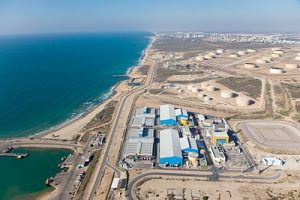
So what is the solution? Fortunately, global populations are taking notice, and nations have begun to work cooperatively towards a sustainable future. At the Paris Climate Conference held in December of 2015, water was of particular focus: the Paris Pact on Water and Adaptation to Climate Change in the Basins of Rivers, Lakes, and Aquifers was signed, and The Paris Call for Actions was officially launched. In addition, individual nations are implementing regulations and guidelines to provide for a more sustainable future. Many nations in the arid Middle East, including Kuwait, Qatar, Saudi Arabia, Israel, and the United Arab Emirates, have embraced desalination as a viable technology for years, and are now looking to reclaimed water to augment their water supply. British Columbia, Canada recently passed The Water Sustainability Act, which allows the government to manage surface water and groundwater as one resource, provide water users with greater certainty regarding their water rights, and establish clear rules about managing water during times of scarcity. The Act, which goes into effect early this year, was enacted to ensure that water stays healthy and secure for future generations of British Columbians.
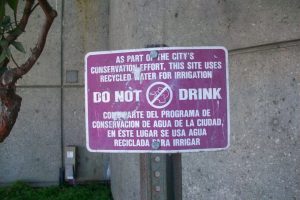
In the United States, water conservation has been brought to the forefront of the public eye, and the EPA has implemented its Sustainable Water Infrastructure program to provide technical support and financial resources to states to increase water and energy efficiency in water, wastewater, and stormwater infrastructure. The goal of the program is to assist water and wastewater facilities in saving water and energy and reducing greenhouse gas emissions. Recycled wastewater is being used to recharge groundwater supplies and to irrigate crops, and the western hemisphere’s largest ocean desalination plant is currently under construction in California. Stormwater is now being viewed as a resource rather than a waste product, with Low Impact Development and sustainable stormwater management practices now commonplace. Engineers are working diligently to innovate energy efficient water conservation technologies, while municipal and governmental entities have been educating the public on the value of water and conservation techniques.
If climate change is allowed to continue uninhibited, people and nations will be forced to compete for water. As is evidenced by the unrest and violence in Syria and the resulting socio-economic devasation, drought and water scarcity exacerbate tensions and contribute to conflict. With increasing population and decreasing supply, there simply won’t be enough water to go around. Even water-rich communities will feel the effects of climate change. While parts of the planet dry up, high latitudes will experience extremely heavy rainfall that increases the level of pollutants, sediment, and nutrients in water, resulting in degraded water quality. Unless climate change is addressed, the global population faces a water crisis that will reach every corner of the globe. As Jean Chrétien, former Canadian prime minister and co-chair of the InterAction Council so eloquently stated,“The future political impact of water scarcity may be devastating. Using water the way we have in the past simply will not sustain humanity in future.”

 With the beginning of each new year come all sorts of resolutions – to eat better, spend less, organize the house, and clean the garage. But the most commonly made resolution by far is to exercise to get into better shape. And while we agree with this resolution 100%, it may not be for the reasons you think. You see, we think you DO need to exercise – your fire hydrants!
With the beginning of each new year come all sorts of resolutions – to eat better, spend less, organize the house, and clean the garage. But the most commonly made resolution by far is to exercise to get into better shape. And while we agree with this resolution 100%, it may not be for the reasons you think. You see, we think you DO need to exercise – your fire hydrants!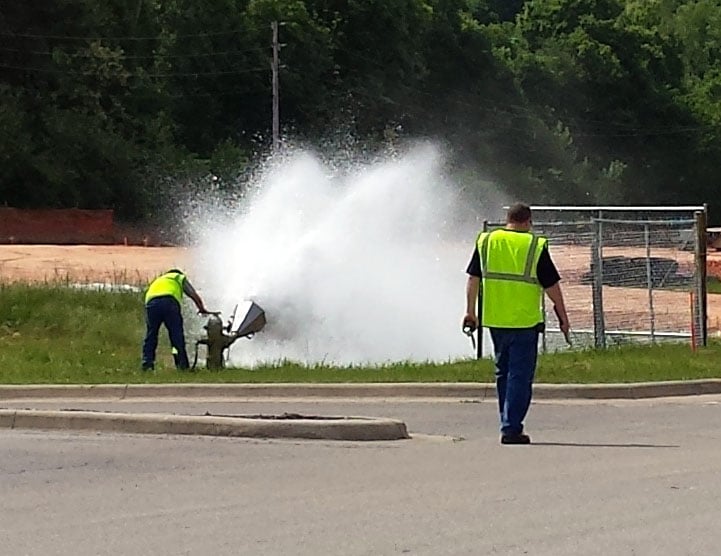 While the primary objective of unidirectional flushing is to clean mains, there are also many secondary goals and benefits. Exercising hydrants and valves prolongs the life of the valves while also locating closed or broken valves. In addition, flushing helps to narrow down a search area when trying to determine the cause of water quality or pressure issues in a specific area of the system. In a best case scenario, the flushing will actually alleviate the water quality issues by flushing out any debris or buildup that is causing the problem. Also, there are often discrepancies between the hydraulic model and the distribution system that can be discovered and addressed during flushing. Lastly, flushing helps to determine or disprove suspected system issues. Frequently, these issues are not of an emergency nature and can either be readily corrected during the flushing process or can be scheduled for repair at a convenient time, BEFORE they require critical attention.
While the primary objective of unidirectional flushing is to clean mains, there are also many secondary goals and benefits. Exercising hydrants and valves prolongs the life of the valves while also locating closed or broken valves. In addition, flushing helps to narrow down a search area when trying to determine the cause of water quality or pressure issues in a specific area of the system. In a best case scenario, the flushing will actually alleviate the water quality issues by flushing out any debris or buildup that is causing the problem. Also, there are often discrepancies between the hydraulic model and the distribution system that can be discovered and addressed during flushing. Lastly, flushing helps to determine or disprove suspected system issues. Frequently, these issues are not of an emergency nature and can either be readily corrected during the flushing process or can be scheduled for repair at a convenient time, BEFORE they require critical attention.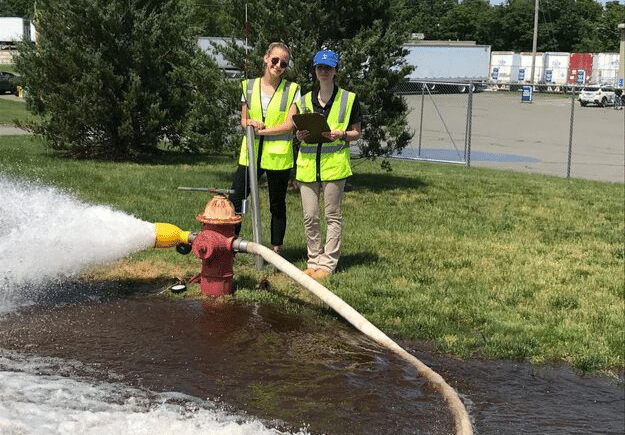 According to The American Water Works Association (AWWA), “distribution system deficiencies continue to be responsible for more then 25 percent of waterborne disease outbreaks in the United States each year, a statistic that underscores the need for water suppliers to effectively control water quality within the distribution system. Flushing is one of the most powerful tools available to a water utility for maintaining this control.” For this reason, AWWA has published a set of guidelines to follow when implementing a unidirectional flushing program. They recommend a minimum velocity of 3.0 feet per second, and also recommend that system pressure in the surrounding area maintain 20 psi, similar to the concept of adequate fire flow availability.
According to The American Water Works Association (AWWA), “distribution system deficiencies continue to be responsible for more then 25 percent of waterborne disease outbreaks in the United States each year, a statistic that underscores the need for water suppliers to effectively control water quality within the distribution system. Flushing is one of the most powerful tools available to a water utility for maintaining this control.” For this reason, AWWA has published a set of guidelines to follow when implementing a unidirectional flushing program. They recommend a minimum velocity of 3.0 feet per second, and also recommend that system pressure in the surrounding area maintain 20 psi, similar to the concept of adequate fire flow availability. During the holiday season, we typically hear about gifts on the 12 days of Christmas, eight days of Chanukkah, or seven days of Kwanza. And in the spirit of the season of gift-giving, many people choose this time of year to donate food to shelters or toys to needy children. We here at Tata & Howard love this time of year and the generosity that is so prevalent, but we are also committed to giving back to the local and global community throughout the year. So this holiday season, we have compiled the 12 Months of Giving — a list of 12 philanthropic events in which we have had the honor of participating in 2015.
During the holiday season, we typically hear about gifts on the 12 days of Christmas, eight days of Chanukkah, or seven days of Kwanza. And in the spirit of the season of gift-giving, many people choose this time of year to donate food to shelters or toys to needy children. We here at Tata & Howard love this time of year and the generosity that is so prevalent, but we are also committed to giving back to the local and global community throughout the year. So this holiday season, we have compiled the 12 Months of Giving — a list of 12 philanthropic events in which we have had the honor of participating in 2015. Charity of Choice: Water For People
Charity of Choice: Water For People Racing for the Jimmy Fund
Racing for the Jimmy Fund Food Drive
Food Drive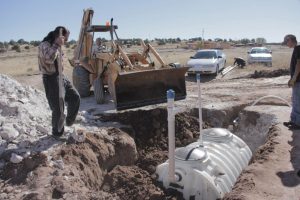 Navajo Nation Water Cistern Donation
Navajo Nation Water Cistern Donation We celebrate Clean Air Day on December 17 each year in honor of the Clean Air Act, which was first passed on that day in 1963. The Clean Air Act, which is a federal law, was originally adopted in an effort to control air pollution. It was one of the first environmental laws in the United States and it helped pave the way for future environmental safeguards, including the Clean Water Act of 1972, which protects our nation’s waters. Both the Clean Air Act and the Clean Water Act are administered by the U.S. Environmental Protection Agency (EPA) in coordination with state and local governments. To this day, the Clean Air Act remains one of the most exhaustive air quality laws in the world.
We celebrate Clean Air Day on December 17 each year in honor of the Clean Air Act, which was first passed on that day in 1963. The Clean Air Act, which is a federal law, was originally adopted in an effort to control air pollution. It was one of the first environmental laws in the United States and it helped pave the way for future environmental safeguards, including the Clean Water Act of 1972, which protects our nation’s waters. Both the Clean Air Act and the Clean Water Act are administered by the U.S. Environmental Protection Agency (EPA) in coordination with state and local governments. To this day, the Clean Air Act remains one of the most exhaustive air quality laws in the world.




